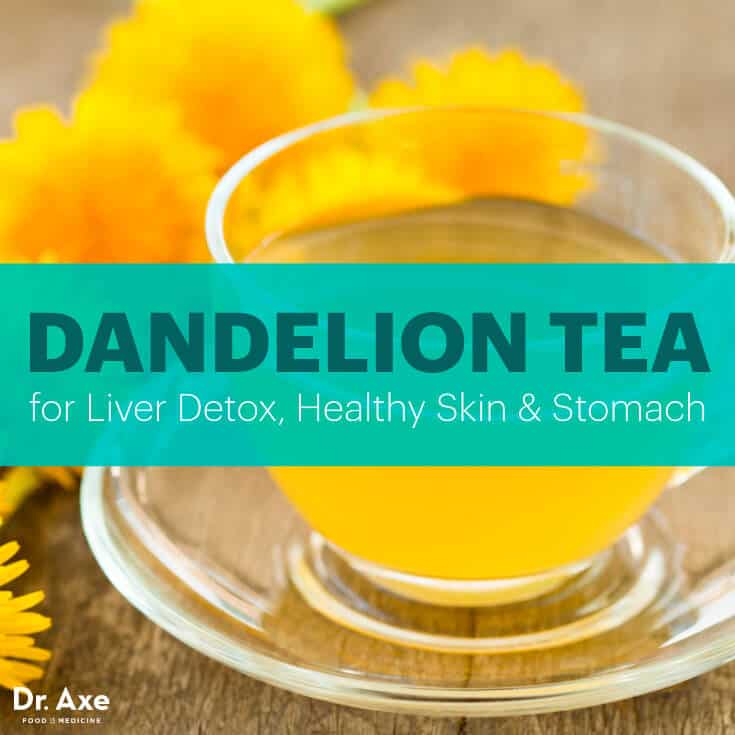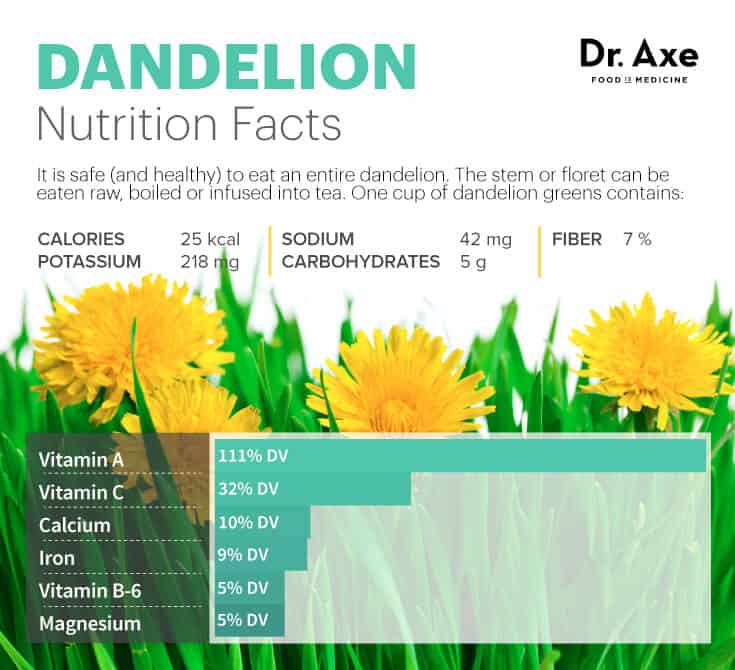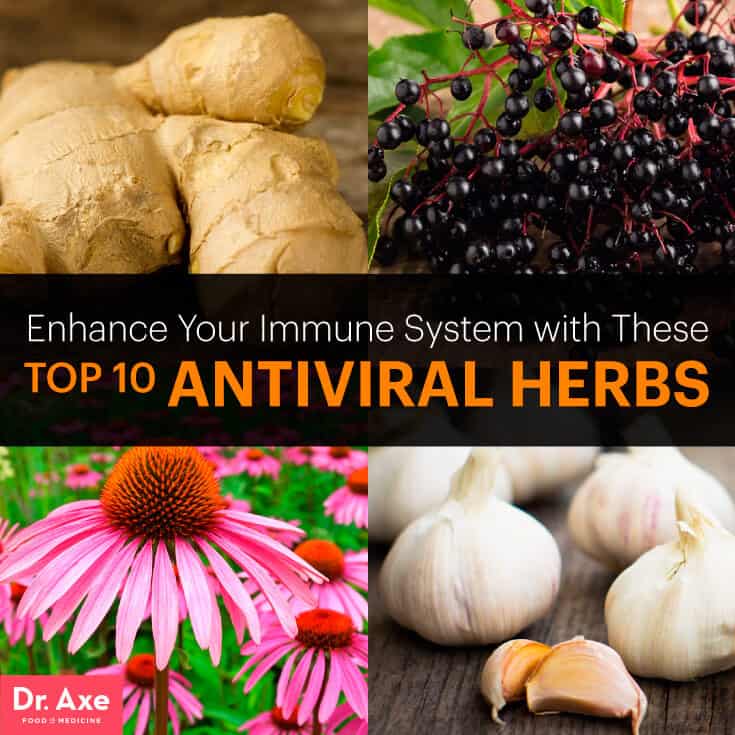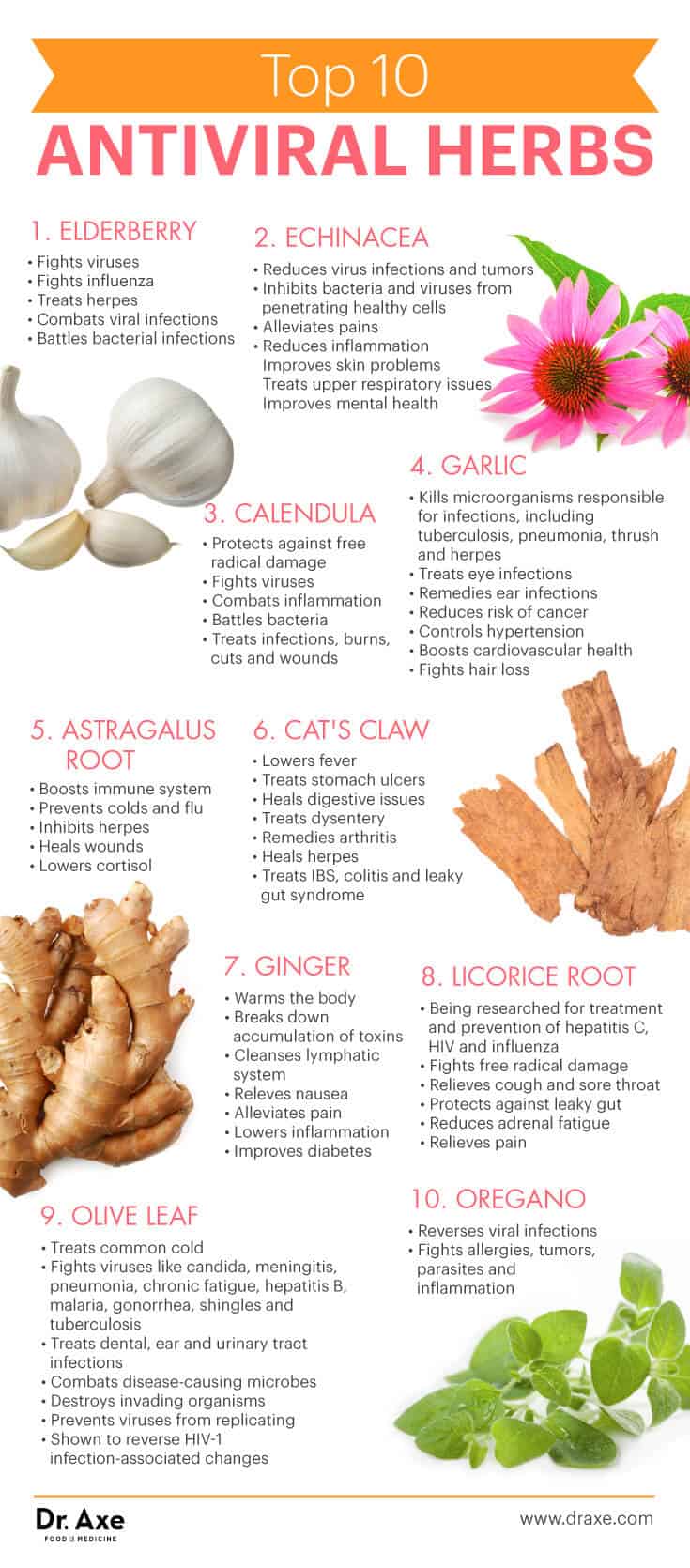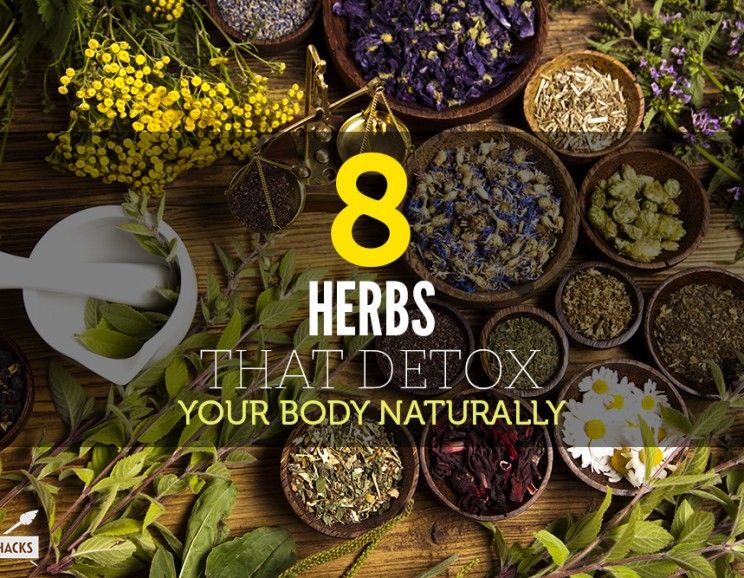Dandelion Tea for Liver Detox, Healthy Skin & Stomach
Dandelion is used for the treatment of muscle aches, loss of appetite, upset stomach, intestinal gas, gallstones, joint pain, eczema and bruises. It also increases urine production and serves as a laxative to increase bowel movements.
Some people use dandelion to treat infection, especially viral infections and even cancer. It’s also used as a skin toner, blood tonic and digestive tonic.
Dandelion greens can be chopped up and used as a garnish or an addition to a sauce, or they can be eaten raw or cooked to minimize their somewhat bitter flavor. You can also use the dandelion root, stems and flowers to make a delicious and super-healthy tea. Either way, you reap the benefits of this unexpected nutritional plant.
Dandelion Tea Nutrition Facts
Dandelions are native to Eurasia and North America; the two species, T. officinale and T. erythrospermum, are found as weeds worldwide. The name dandelion comes from the French word dent-de-lion, meaning “lion’s tooth.” Dandelion plants are from the Asteraceae family and part of the Taraxacum species. They look like very small flowers that are collected together into a flower head, or floret.Many Taraxacum species produce seeds asexually by apomixis, meaning the seeds can be produced without pollination. This is why dandelions are genetically identical to the parent plant.
The leaves of a dandelion flower are typically five to 25 centimeters long. The flower heads are a yellow to orange color; they open in the daytime and stay closed at night. When you break the stem of a dandelion, it exudes a white and milky liquid. When the flowerhead matures, it becomes a white ball that contains many seeds and fine hairs.
It’s safe (and healthy) to eat an entire dandelion. The stem or floret can be eaten raw, boiled or infused into tea. One cup of dandelion greens contains:
- 25 calories
- 42 milligrams of sodium
- 218 milligrams of potassium
- 5 grams of carbohydrates
- 7 percent dietary fiber
- 535 percent vitamin K
- 111 percent vitamin A
- 32 percent vitamin C
- 5 percent vitamin B6
- 10 percent calcium
- 9 percent iron
- 5 percent magnesium
10 Dandelion Benefits
1. Protects Bones
Calcium is the most abundant mineral in the body and dandelions contain 10 percent of your daily value. Calcium is stored in the structure of the bones and teeth. It’s used for nerve transmission, blood clotting, hormone secretion and muscle contraction.By drinking dandelion tea or eating the greens, you can easily avoid tooth decay, muscle tension and high blood pressure and calcium deficiency.
2. High in Vitamin K
Vitamin K is an essential fat-soluble vitamin that plays an important role in bone and heart health, and can you believe that dandelions contain over 500 percent of your daily value? That makes dandelions excellent at preventing vitamin k deficiency. Vitamin K is the main vitamin involved in bone mineralization and blood clotting — in fact, vitamin K builds bones better than calcium! And it helps maintain brain function and a healthy metabolism.There is increasing evidence that vitamin K can improve bone health and reduce the risk of bone fractures, especially in postmenopausal women who are at risk for osteoporosis. (1)
Vitamin K also helps with menstrual bleeding because of its blood-clotting capabilities. Recently, it has caught attention for its cancer-fighting properties too. Vitamin K has been shown to be effective as a natural cancer treatment, including reducing the risk of prostate, colon, stomach, nasal and oral cancers. One study conducted in 2014, published in the Journal of Nutrition, that included over 7,000 participants found that vitamin K has the power to significantly reduce the risk of cancer and cardiovascular mortality. (2)
3. Cleanses Liver
The role of our liver is to produce bile, which helps enzymes in the body break down fats into fatty acids — and to filter and detoxify our blood. The liver also has the amazing ability to break down and store amino acids, synthesize and metabolize fats and cholesterol, store glucose, and regulate our internal functions. The vitamins and nutrients present in dandelions help cleanse our livers and keep them working properly.Dandelions aid our digestive system by maintaining the proper flow of bile. Dandelion tea or stems are also good vitamin C foods, which helps with mineral absorption, reduces inflammation and prevents the development of disease. (3)
4. Fights Diabetes
Dandelion tea and juice help people with diabetes by stimulating the production of insulin from the pancreas and keeping blood sugar levels low. If our pancreas doesn’t produce proper amounts of insulin, or if our cells can’t properly process insulin, it results in diabetes. Because the glucose isn’t properly utilized, it accumulates in the bloodstream and results in high blood glucose or sugar levels.To fight diabetes naturally, dandelion tea also helps the body remove excess sugar that’s stored in the body — because it’s a diuretic.
5. Fights Skin Infections
The milky white substance that you get on your fingers when you break a dandelion stem is actually great for your skin! The sap of a dandelion stem is highly alkaline, and it has germicidal, insecticidal and fungicidal properties.You can also use the sap to relieve itching or irritation from eczema, ringworm, psoriasis and other skin infections.
6. High in Antioxidants
Another important dandelion benefit is its high antioxidant properties. Antioxidants are substances that help prevent certain types of cell damage, especially those caused by oxidation. The body uses antioxidants to fight free radical damage, which is very dangerous for the body’s tissues and is connected to cancer and premature aging. (4)Luckily, drinking dandelion tea helps the body avoid cell damage from free radicals. In fact, a study conducted in 2011 by the Department of Chemistry and Biochemistry at the University of Windsor in Canada found that dandelion root extract was effective in killing different cancers as a result of its free radical-fighting abilities. (5)
7. Rich in Fiber
Dandelion tea and greens are high-fiber foods, making them a beneficial aid for digestion and intestinal health. Fiber is responsible for quickly moving foods through the digestive tract, helping it function optimally. Fiber works by drawing fluids from the body to add bulk to the stool.High-fiber diets also reduce the risk of obesity, heart disease and diabetes; fiber has the power to lower the risk of some cancers’ help with diverticulosis; and prevent heart disease, irritable bowel syndrome, kidney stones and obesity. Some studies show that women with PMS or those who are menopausal can experience some relief from symptoms with high-fiber diets.
8. Good Source of Vitamin A
Vitamin A plays a critical role in maintaining healthy vision, neurological function, healthy skin and more. Vitamin A is an antioxidant, so it has the power to reduce inflammation by fighting free radical damage. Just one cup of dandelion greens has over 100 percent of the daily value of vitamin A, so you can fight premature aging, respiratory infections and vision impairment with just a mug of dandelion tea.Vitamin A also provides immune support, promotes skin health and helps prevent cancer. For women who are pregnant, getting enough vitamin A is very important, especially during the third trimester. A pregnant woman can even suffer from night blindness if her vitamin A intake isn’t sufficient.
9. Serves as Diuretic
Dandelion root has a natural diuretic effect, allowing your liver to more quickly eliminate toxins. It also helps strengthen the immune system, balance blood sugar levels, relieve heartburn and soothe digestive issues.Because dandelion helps reduce uric acid and stimulates urine production, it’s beneficial for fighting bacterial infections within the digestive tract and reproductive organs.
10. Prevents Urinary Tract Infections
Dandelion tea can help prevent urinary tract infections, as well as bladder disorders, kidney problems and possibly even cysts on reproductive organs. (6) (7)A specific combination of dandelion root and leaf extracts of another herb called uva ursi taken by mouth helps reduce the number of UTIs in women. In this combination, uva ursi is used because it kills bacteria, and dandelion is used because of its ability to increase urine flow and fight infection.
Dandelion Tea History & Interesting Facts
There are many varieties of dandelion, but the common dandelion is scientifically known as Taraxacum Officinale. In terms of history, the plant is believed to have evolved about 30 million years ago in Eurasia.Many people try to get rid of dandelions as they grow in our yards year after year, but the dandelion plant is actually a beneficial weed. It’s helpful when gardening because it brings nutrients to the top of the soil, helping shallow-rooted plants and adding minerals and nitrogen to the soil. It also attracts pollinating insects and releases ethylene gas that helps the fruit ripen.
Another interesting fact — did you know that four dandelion flowers are the emblem of White Sulphur Springs, West Virginia? The citizens there even celebrate spring with an annual Dandelion Festival. I’m sure they know about its many health benefits!
How to Pick and Use Dandelion Flowers
If you pick your own dandelions, make sure to avoid areas where weed-killer may have been sprayed. You don’t want to consume the nasty chemicals found in weed-killer!Try to pick from an area that is free from pollution, too. You want to look for the younger and tender plants; they’re less bitter. You can also find bunches of dandelion plants in your local health store.
If you plan on using the roots, dig down deep and pull up the entire mass — sometimes it’s attached to several stems. Clean it with water until all of the dirt is removed. You can use the raw root to make tea or roast the root to make coffee.
Once you’re ready to eat your dandelions, make sure to wash them thoroughly. They can be stored in the refrigerator for a week — sometimes wrapping the greens in a damp paper towel keeps them fresh longer.
Dandelion greens can be sauteed, boiled and eaten raw. You can also make your own dandelion tea, which is a healthy alternative to coffee.
DIY Dandelion Recipes
There are so many ways to incorporate the dandelion plant into your every day meals. One of the best ways to experience all of the dandelion benefits is by making your own dandelion tea. You can make tea with the roots or flowers of dandelions. It’s very easy — steep the root or flowers for 30 minutes in boiling water. You can strain the roots and flowers or drink them up with your tea.You can also roast the root of your dandelion plant to make a coffee-like beverage. After cleaning the root, chop it in a food processor, use a baking sheet and roast the pieces in an oven at 300 degrees for two hours. Then let it steep in boiling water for 10 minutes before drinking.
For a few ideas concerning dandelion’s detoxifying properties, check out my six-step liver cleanse; consuming dandelion root has the power to improve immune system function and detoxify the body.
Dandelion greens are a great addition to make sauces or dips. For example, try adding 1/2 cup of dandelion stems to my Cilantro Pesto Recipe. Both the cilantro and dandelions are high in antioxidants that fight free radicals, help support the body in detoxification and have antimicrobial properties.
You can add dandelion stems to a ton of salad recipes. It can have a bite to it; some describe it as even a bitter taste, so it would be perfect in hardy mix of vegetables. My Broccoli Salad Recipe is the perfect mix for dandelion. Broccoli and dandelions have plenty of fiber and vitamin C to keep your body running properly throughout the day.
Dandelions are also great with seafood and pasta dishes. The dandelion flower can used as an herb — just to add a little kick to your plate. Try adding a tablespoon of chopped dandelion stems to my Salmon Patties Recipe. This healthy salmon patties recipe is sure to become a family favorite because it’s loaded with healthy omega-3 fats and has a delicious flavor! The added dandelion boosts the health benefits of this already nutritious meal.
Sautéed Pesto Mahi Mahi Recipe
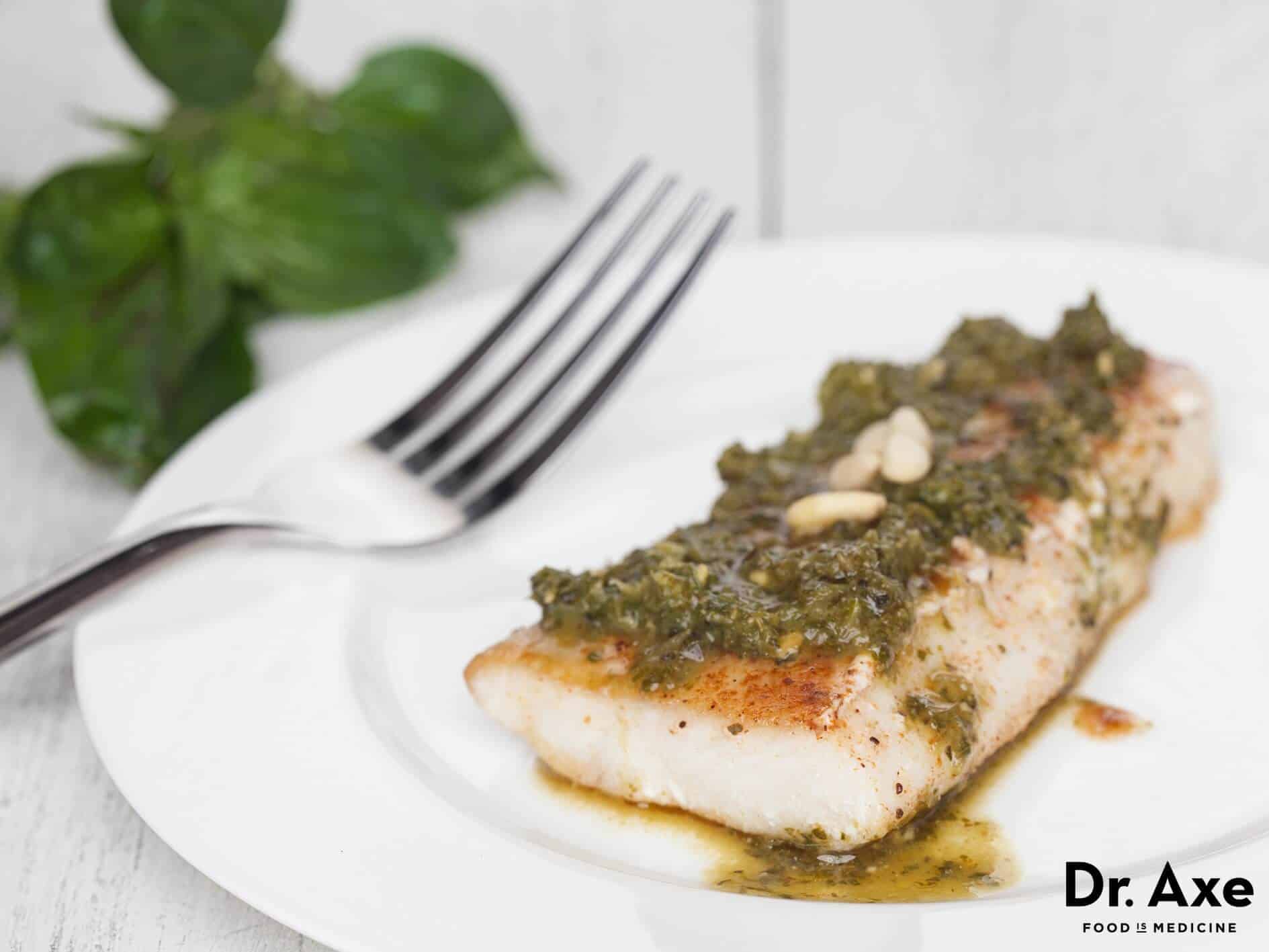
This Sautéed Pesto Mahi Mahi Recipe
is healthy, gluten-free, delicious and very easy to make! Add 1/2 cup
of dandelion greens, and you have a super nutritious meal.
Total Time: 15 minutes
Serves: 4
INGREDIENTS:
- 4 wild caught Mahi Mahi fish fillets
- 1 lemon
- 2 cups fresh basil, sage, cilantro and parsley, lightly packed
- 1/2 cup dandelion greens
- 2 cloves garlic
- 1/2 cup olive oil
- 1/4 cup pine nuts
- 1/2 cup raw cheese, grated
DIRECTIONS:
- Combine the herbs, garlic, oil and pine nuts in a food processor and process until the mixture is creamy. Pulse in the cheese.
- Place a skillet with coconut oil over medium high heat until it just starts to smoke. Rub fish on both sides with the above mixture. Sauté fish in pan until fish flakes easily, approximately 3–5 minutes per side.
- When fish is done, brush both sides with pesto sauce again. Squeeze lemon over the fish and serve immediately.
Possible Dandelion Side Effects and Interactions
Dandelions can cause allergic reactions when taken by mouth or applied to the skin of sensitive people. If you’re allergic to ragweed and related plants (daisies, chrysanthemums, marigolds), you’re likely to be allergic to dandelion. If you have allergies, be sure to check with your health care provider before taking dandelion.Dandelion might decrease how much antibiotic the body absorbs. Taking dandelion along with antibiotics might decrease the effectiveness of some antibiotics. Some antibiotics that might interact with dandelion include ciprofloxacin, enoxacin, norfloxacin, sparfloxacin, trovafloxacin and grepafloxacin.
Taking dandelion might decrease how well the body gets rid of lithium because of its diuretic properties. This could increase how much lithium is in the body and result in serious side effects. There is also potassium in some diuretic pills, so be careful when taking these “water pills” because you don’t want too much lithium or potassium in the body.
Dandelion might decrease how quickly the liver breaks down some medications. Before taking dandelion, talk to your health care provider if you take any medications that are changed by the liver. Some of these types of medications include amitriptyline, haloperidol, ondansetron, propranolol, theophylline and verapamil.
From the sound of it, you might think leaky gut only affects the digestive system, but in reality it can affect more.
